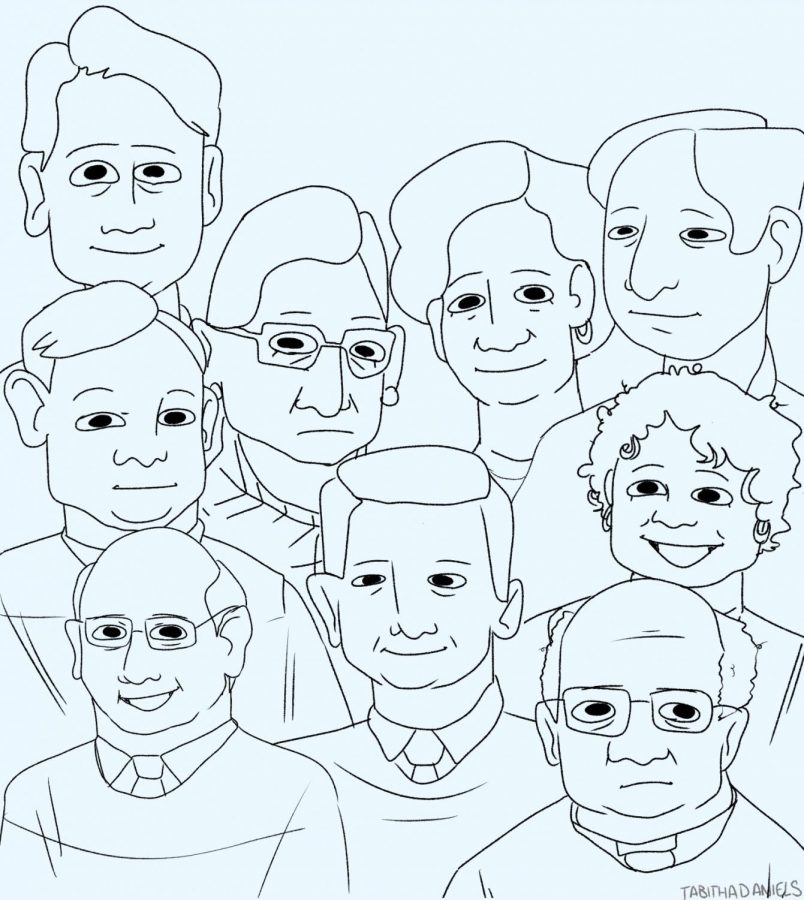A look at three Supreme Court cases
December 6, 2020
With the recent addition of Amy Coney Barret to the Supreme Court, many people have been awaiting new decisions regarding COVID relief, religious freedom, healthcare, LGBTQ rights and many more.
The newly changed court has already heard a case pertaining to religious freedom. During the summer, in a continued attempt to slow COVID-19 numbers, New York City imposed a ban of gatherings over 10 people at religious services in specific “red zones,” while still allowing businesses deemed essential to allow any number of people. The “essential” businesses were quite expansive, including not only grocery stores and chemical plants, but acupuncture facilities and garages. Even in the designated “orange zones,” houses of worship could have only 25 people gathered, while essential businesses still had no limit on their capacity. These restrictions heavily affect Catholic churches in the Brooklyn district, along with several large synagogues. After the religious organizations sued the state for restricting their religious freedom, Governor Andrew Cuomo redesignated the zones as yellow, which allows for “50 percent of their maximum capacity.” Many of the churches and synagogues affected can seat hundreds of people.
The justices weighed the constitutionality of this law, but their personal beliefs about religion were also extremely apparent. Justice Neil Gorsuch and Justice John Roberts vehemently discussed the previous precedent of Jacobson v. Massachusetts, and Gorsuch attacked Roberts’ decision, arguing that it was being misused to allow greater government control during the COVID pandemic.
Justice Samuel Alito said,“the pandemic has resulted in previously unimaginable restrictions on individual liberty,” and sided with Clarence Thomas and the three Trump-appointed justices: Brent Kavanaugh, Neil Gorusch and Amy Coney Barret. In a 5-4 decision, the Supreme Court ruled in favor of the religious organizations, lifting the COVID restrictions in not only New York City, but similar cases in California and Nevada.
Another important case facing the deliberations of the Supreme Court is California v. Texas, on the topic of healthcare — more specifically, the Affordable Care Act (ACA). In 2012, the Supreme Court ruled that the ACA was constitutional based on the interpreted use of Congressional taxing power in the law’s individual mandate, which requires most people to have minimum coverage. However, with the Tax Cuts and Jobs Act, Congress put the shared responsibility payment to zero dollars, meaning that the mandate could potentially be unconstitutional as it is no longer viewed as a tax.
Before the court can begin their judicial review, they must determine whether the Texas prosecutor even has the right to sue. The state challengers must prove that there has been an injury sustained due to the nature of the mandate or any other part of the ACA. While a decision will likely not emerge until early 2021, there is also a possibility of the mandate being declared unconstitutional, but for the rest of the ACA to remain standing.
LGBTQ rights were stressed as an important subject to watch with the recent additions of more conservative judges, and the case Fulton v. City of Philadelphia is a good example of the continued dissonce between religious freedom and LGBTQ rights. In March 2018, the city of Philadelphia refused to renew a foster care contract with the Catholic Social Services (CSS) because of their refusal to liscense same-sex couples. The CSS has argued that that is their prerogative under the freedom of religion and speech, although this was rejected at both the district court and the Third Circuit Court of Appeals. In order for the CSS to win this case, they must prove that they were discriminated against solely because of their religion, and that this would not have happened if they had been of a different religion or simply secular.
All of these cases have been argued in front of the Supreme Court, but only one decision has been announced. For the later two cases, a decision is expected to be released in early 2021.


